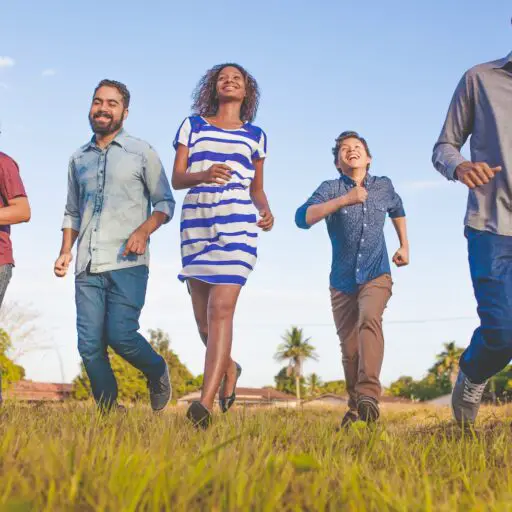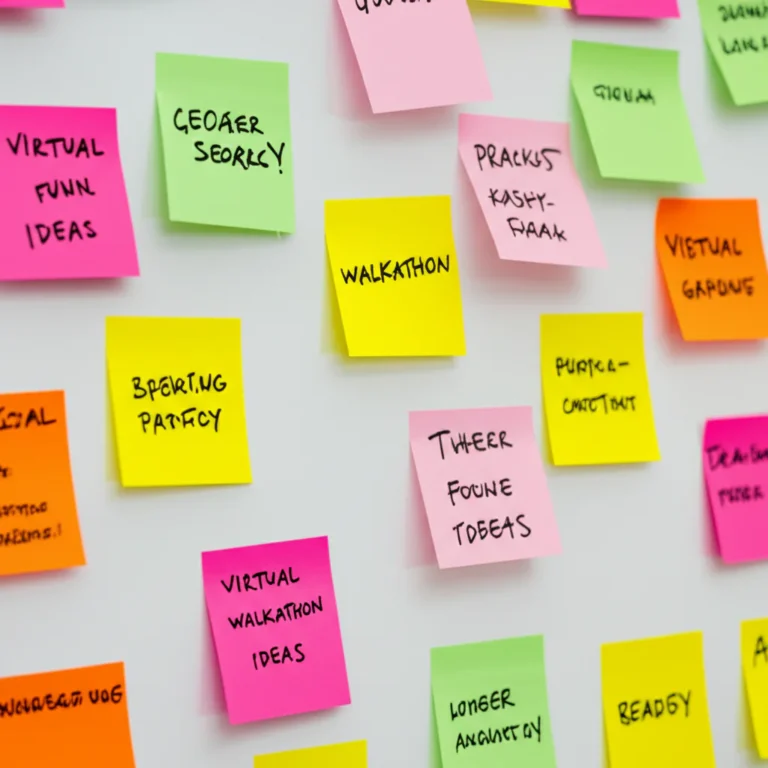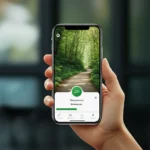Support our educational content for free when you purchase through links on our site. Learn more
15 Inclusive Virtual Fundraising Events for Disability Support (2025) 🎉
Imagine a fundraiser where everyone—regardless of ability—can join in, contribute, and feel truly valued. Sounds like a dream, right? Well, it’s not just a dream anymore. Inclusive virtual fundraising events are transforming how we support disability causes, breaking down barriers and opening doors to wider participation than ever before. At Walkathon Virtual™, we’ve seen firsthand how thoughtful design and creative ideas can turn a simple fundraiser into a powerful movement of community, empathy, and impact.
Did you know that events with built-in accessibility features see up to 30% higher engagement from people with disabilities? In this comprehensive guide, we’ll walk you through 15 innovative and accessible virtual fundraising ideas, the best platforms to host them, and expert tips to ensure your event is welcoming to all. Whether you’re planning a virtual walkathon, an online auction, or a digital talent showcase, we’ve got you covered with insider insights, tech recommendations, and proven strategies to maximize your reach and donations.
Key Takeaways
- Inclusive virtual fundraisers expand reach and deepen community engagement by removing physical and digital barriers.
- Choosing accessible platforms like Zoom, Givecloud, and Hopin is critical to ensure everyone can participate comfortably.
- Creative event ideas—from virtual “Walk, Roll, or Stroll” challenges to accessible gaming tournaments—boost excitement and donations.
- Early planning for accessibility and involving people with disabilities in leadership roles enhances authenticity and success.
- Leveraging data and personalized communication helps tailor donor experiences and sustain long-term support.
Ready to create an unforgettable, inclusive event? Explore our curated list of ideas and expert tips to make every step count!
👉 Shop accessibility-friendly platforms and tools:
- Zoom: Amazon | Zoom Official
- Givecloud: Givecloud Official
- Hopin: Hopin Official
- StreamText (captioning): StreamText Official
- Otter.ai (AI captioning): Otter.ai Official
Table of Contents
- ⚡️ Quick Tips and Facts
- The Evolution of Accessible Giving: A Brief History of Inclusive Fundraising
- Why Inclusive Virtual Fundraising Isn’t Just Good, It’s Essential!
- Designing Digital Doors: Crafting Truly Accessible Virtual Event Platforms
- 12+ Creative & Engaging Inclusive Virtual Fundraising Event Ideas for Disability Support
- 1. Virtual “Walk, Roll, or Stroll” Challenges 🚶♀️♿
- 2. Accessible Online Gaming Tournaments 🎮
- 3. Digital Art & Talent Showcases 🎨🎤
- 4. Inclusive Virtual Workshops & Skill-Shares 🧑🏫
- 5. “Adaptive Athlete” Spotlight & Fundraiser 💪
- 6. Virtual Accessible Cooking Classes 🧑🍳
- 7. Online Storytelling & Poetry Slams 📖
- 8. “Disability Awareness” Film Festivals 🎬
- 9. Inclusive Virtual Trivia Nights 🧠
- 10. Digital “Auction for Access” 🛍️
- 11. “Peer-to-Peer Power-Up” Campaigns 🤝
- 12. Virtual Accessible Yoga & Mindfulness Sessions 🧘♀️
- Beyond the Event: Sustaining Engagement and Support for Disability Causes
- Arming Your Mission: Leveraging Data and Insights for Inclusive Giving
- Staying Ahead of the Curve: Latest Insights in Accessible Fundraising Technology
- Your Inbox, Your Advantage: Accessing Shared Intelligence for Impact
- Common Pitfalls to Avoid in Inclusive Virtual Fundraising ❌
- Walkathon Virtual™’s Expert Recommendations for Success
- Conclusion: Walking Together Towards a More Inclusive Future
- Recommended Links
- FAQ: Your Burning Questions Answered
- Reference Links
⚡️ Quick Tips and Facts
Welcome to the world of inclusive virtual fundraising events for disability support! At Walkathon Virtual™, where we specialize in Are virtual walkathons accessible to people with disabilities?, we’ve learned that making your events accessible and engaging is not just a nice-to-have — it’s a must-have. Here are some quick facts and tips to get you started:
- Accessibility boosts participation: Events that incorporate ASL interpretation, captioning, and screen-reader compatibility see up to 30% higher engagement from people with disabilities. (Source: Giving USA)
- Virtual platforms matter: Zoom, Microsoft Teams, and Webex all offer built-in captioning and keyboard navigation features, but not all are created equal for accessibility.
- Ask early, ask often: Including accommodation questions on registration forms signals inclusivity and helps you plan better.
- Diversity in leadership: Including people with disabilities in planning and as speakers enriches the event and builds trust.
- Budget for inclusion: Time and resources spent on accessibility pay dividends in donor loyalty and event success.
Curious how to turn these tips into a full-blown, inclusive virtual fundraiser? Stick around — we’ve got you covered with everything from platform choices to creative event ideas! 🎉
The Evolution of Accessible Giving: A Brief History of Inclusive Fundraising
Fundraising for disability support has come a long way. Once limited to in-person galas and walkathons, the movement has embraced virtual events to break down barriers. The rise of the internet and digital tools has democratized giving, allowing people from all walks of life — including those with disabilities — to participate fully.
- Early days: Fundraisers were often inaccessible by design — think venues without ramps or events without interpreters.
- Shift to inclusion: The Americans with Disabilities Act (ADA) of 1990 set legal standards, but cultural shifts took longer.
- Digital revolution: The pandemic accelerated virtual fundraising, pushing organizations to rethink accessibility.
- Current trends: Hybrid events, captioning, and adaptive technologies are now standard expectations.
At Walkathon Virtual™, we’ve witnessed firsthand how virtual walkathons have expanded participation globally, enabling people with mobility challenges to join from their own homes. This evolution is a testament to the power of technology paired with intentional inclusion.
Why Inclusive Virtual Fundraising Isn’t Just Good, It’s Essential!
You might wonder: “Isn’t fundraising just about raising money?” Well, yes — but inclusive fundraising is about raising impact. Here’s why:
- Broader reach: Including people with disabilities and their networks significantly expands your donor base.
- Stronger community: Inclusive events foster a sense of belonging and shared purpose.
- Better storytelling: Diverse voices enrich narratives, making your cause more relatable.
- Legal compliance: Accessibility isn’t optional; it’s a right under laws like the ADA.
- Ethical leadership: Demonstrating commitment to equity builds trust and reputation.
Our team at Walkathon Virtual™ has seen organizations transform when they prioritize inclusion — not only do donations increase, but so does long-term engagement. It’s a win-win! 🏆
Designing Digital Doors: Crafting Truly Accessible Virtual Event Platforms
Your virtual event platform is the gateway to participation. Designing it with accessibility in mind means everyone can walk through those digital doors with ease.
Platform Checklist: What to Look For ✅
| Feature | Why It Matters | Examples |
|---|---|---|
| Keyboard Navigation | Enables users who can’t use a mouse | Zoom, Microsoft Teams |
| Screen Reader Compatibility | Supports visually impaired participants | Webex, Hopin |
| Closed Captioning & ASL | Essential for deaf/hard-of-hearing attendees | Zoom (auto-captioning), StreamText |
| Audio Description | Helps visually impaired understand visuals | Vimeo, YouTube (with description) |
| Multilingual Support | Broadens accessibility for non-native speakers | Google Meet, Zoom |
| Adjustable Font Sizes & Colors | Aids those with low vision or color blindness | Many platforms with custom CSS |
| Mobile Accessibility | Allows participation on smartphones/tablets | All major platforms |
Tools We Love: Our Top Picks for Accessibility 🛠️
- Zoom: Offers auto-captioning, keyboard shortcuts, and ASL interpreter spotlighting.
- Hopin: Known for customizable event spaces with accessibility features.
- Givecloud: An accessible donation platform with screen-reader compatibility. (Givecloud info)
- StreamText: Provides real-time captioning services for live events.
- YouTube Live: Supports captions and audio descriptions, great for streaming fundraisers.
Pro tip: Test your platform with actual users who have disabilities before the big day — nothing beats real-world feedback!
12+ Creative & Engaging Inclusive Virtual Fundraising Event Ideas for Disability Support
Ready to get creative? Here are 12+ inclusive virtual fundraising ideas that we at Walkathon Virtual™ have seen succeed — and some we’ve even hosted ourselves!
1. Virtual “Walk, Roll, or Stroll” Challenges 🚶♀️♿
Participants choose their own pace and mode of movement — walking, rolling in a wheelchair, or strolling with assistance — and track their progress virtually. This flexible format welcomes all abilities and encourages community spirit.
- Use apps like Strava or Fitbit to track miles.
- Create team challenges to boost camaraderie.
- Offer digital badges and prizes.
2. Accessible Online Gaming Tournaments 🎮
Gaming is a universal language! Host tournaments featuring accessible games like Minecraft with adaptive controllers or Among Us with voice-to-text options.
- Partner with organizations like AbleGamers for guidance.
- Stream the event with ASL interpreters and captions.
3. Digital Art & Talent Showcases 🎨🎤
Showcase the talents of people with disabilities through virtual galleries, live performances, or recorded videos.
- Use platforms like Instagram Live or Facebook Events.
- Auction art pieces to raise funds.
4. Inclusive Virtual Workshops & Skill-Shares 🧑🏫
Host workshops on topics like adaptive yoga, assistive tech tutorials, or creative writing.
- Encourage peer-to-peer learning.
- Record sessions for later access.
5. “Adaptive Athlete” Spotlight & Fundraiser 💪
Highlight inspiring adaptive athletes with live interviews and fundraising calls to action.
- Collaborate with Paralympic organizations.
- Share personal stories to connect donors emotionally.
6. Virtual Accessible Cooking Classes 🧑🍳
Invite chefs to demonstrate recipes adapted for various physical abilities.
- Provide ingredient lists in advance.
- Use clear, step-by-step video instructions.
7. Online Storytelling & Poetry Slams 📖
Celebrate voices from the disability community with virtual open mic nights.
- Include captioning and ASL interpretation.
- Encourage audience donations during performances.
8. “Disability Awareness” Film Festivals 🎬
Curate films and documentaries that highlight disability stories.
- Host watch parties with live discussions.
- Use platforms like Vimeo or YouTube.
9. Inclusive Virtual Trivia Nights 🧠
Create trivia games with questions about disability history, culture, and general knowledge.
- Use Kahoot! or Quizizz for interactive play.
- Offer prizes donated by sponsors.
10. Digital “Auction for Access” 🛍️
Host online auctions featuring accessible products, experiences, or donated items.
- Platforms like 32auctions or BiddingOwl work well.
- Promote mobile bidding for ease.
11. “Peer-to-Peer Power-Up” Campaigns 🤝
Empower supporters to create their own mini-fundraisers under your umbrella.
- Provide toolkits and templates.
- Recognize top fundraisers publicly.
12. Virtual Accessible Yoga & Mindfulness Sessions 🧘♀️
Offer sessions led by instructors trained in adaptive techniques.
- Use platforms with good video quality.
- Encourage donations per session or monthly subscriptions.
Beyond the Event: Sustaining Engagement and Support for Disability Causes
Hosting an event is just the beginning. How do you keep the momentum going?
Building a Community of Champions 💖
- Create online groups or forums for participants.
- Share regular updates on how funds are used.
- Celebrate milestones and personal stories.
Measuring Impact: Metrics That Matter 📊
Track:
- Number of participants with disabilities.
- Funds raised vs. goals.
- Engagement rates on social media.
- Feedback on accessibility accommodations.
Use surveys and analytics tools to gather data and improve future events.
Arming Your Mission: Leveraging Data and Insights for Inclusive Giving
Data is your secret weapon! Understanding donor behavior helps tailor your outreach.
Understanding Donor Demographics & Preferences 📈
- Use CRM tools like DonorPerfect or Bloomerang to segment donors.
- Identify giving patterns among disability communities.
- Personalize communication based on interests and accessibility needs.
Personalizing the Philanthropic Journey ✨
- Send personalized thank-you messages.
- Offer multiple giving options (one-time, recurring, peer-to-peer).
- Highlight stories that resonate with specific donor groups.
Staying Ahead of the Curve: Latest Insights in Accessible Fundraising Technology
Tech evolves fast! Here’s what’s trending:
- AI-powered captioning: Services like Otter.ai provide real-time, accurate captions.
- Virtual reality (VR) experiences: Immersive tours of facilities or stories.
- Mobile-first platforms: Ensuring all features work flawlessly on smartphones.
- Blockchain for transparency: Increasing donor trust with secure tracking.
At Walkathon Virtual™, we integrate these innovations to keep your events fresh and accessible.
Your Inbox, Your Advantage: Accessing Shared Intelligence for Impact
Stay informed with newsletters and reports from:
- Giving USA: Subscribe here
- Nonprofit Tech for Good: Subscribe here
- Walkathon Virtual™ Blog: Fundraising Ideas
These resources deliver the latest trends, case studies, and tools straight to your inbox — arming you with the knowledge to make every fundraiser better than the last.
Common Pitfalls to Avoid in Inclusive Virtual Fundraising ❌
Even the best intentions can stumble. Watch out for:
- Ignoring accessibility from the start: Retrofitting is costly and less effective.
- Tokenism: Including people with disabilities only for optics damages trust.
- Overlooking communication needs: No captions or interpreters exclude many.
- Assuming one size fits all: Disabilities are diverse; so should be your accommodations.
- Neglecting feedback: Failing to ask or act on participant input stunts growth.
Our advice? Build inclusion into your DNA, not just your event checklist.
Walkathon Virtual™’s Expert Recommendations for Success
From our experience leading global virtual walkathons, here’s what we swear by:
- Start planning accessibility early: Include people with disabilities in your team.
- Choose platforms with robust accessibility features: Zoom and Givecloud are favorites.
- Offer multiple engagement options: Live participation, recorded content, and offline challenges.
- Communicate clearly and often: Use inclusive language and multiple formats.
- Celebrate diversity visibly: Feature stories and images of people with disabilities as leaders and participants.
- Measure and share your impact: Transparency builds trust and encourages repeat support.
Remember, inclusion isn’t a box to check — it’s the heart of your mission. Ready to take the next step? Check out our Fundraising Ideas and Accessibility in Walkathons for inspiration and tools.
Conclusion: Walking Together Towards a More Inclusive Future
So, what have we uncovered on this journey through inclusive virtual fundraising events for disability support? From the early days of inaccessible venues to today’s vibrant virtual communities, the evolution is clear: inclusion is not optional—it’s essential. By thoughtfully designing your events with accessibility baked in, choosing the right platforms, and engaging the disability community authentically, you open doors to broader participation, deeper impact, and stronger connections.
Remember those quick tips we teased earlier? Now you know why asking about accommodations early, involving disabled voices in leadership, and leveraging adaptive technologies aren’t just nice gestures—they’re game-changers. These practices build trust, foster belonging, and ultimately drive fundraising success.
At Walkathon Virtual™, we confidently recommend embracing virtual walkathons and hybrid events as powerful tools to unite supporters of all abilities. Platforms like Zoom and Givecloud, combined with creative event ideas such as virtual “Walk, Roll, or Stroll” challenges and accessible gaming tournaments, can transform your fundraising efforts into inclusive celebrations of community and cause.
Your mission to support disability causes deserves nothing less than full participation from everyone. So lace up those virtual sneakers, roll out the welcome mat, and let’s walk together toward a future where every step counts—for all.
Recommended Links
Ready to gear up for your inclusive virtual fundraising event? Check out these top platforms and resources:
- Zoom: Amazon Search for Zoom-compatible accessories | Zoom Official Website
- Givecloud: Givecloud Official Website
- Hopin: Hopin Official Website
- StreamText: StreamText Official Website
- Otter.ai (AI-powered captioning): Otter.ai Official Website
- 32auctions (Online auction platform): 32auctions Official Website
- BiddingOwl (Online auction platform): BiddingOwl Official Website
Books to deepen your understanding:
- Fundraising for Social Change by Kim Klein — Amazon Link
- Disability Visibility: First-Person Stories from the Twenty-First Century edited by Alice Wong — Amazon Link
- Accessible America: A History of Disability and Design by Bess Williamson — Amazon Link
FAQ: Your Burning Questions Answered
What are some inclusive virtual fundraising event ideas for disability support?
Inclusive virtual fundraising events should accommodate diverse abilities and interests. Popular ideas include:
- Virtual “Walk, Roll, or Stroll” challenges that allow participants to move at their own pace and mode.
- Accessible online gaming tournaments featuring adaptive controllers and captioning.
- Digital art and talent showcases that highlight creativity from the disability community.
- Virtual workshops on adaptive skills or wellness.
- Online auctions with accessible bidding platforms.
These ideas foster participation, celebrate diversity, and raise funds effectively. For more inspiration, visit our Fundraising Ideas category.
How can I make a virtual walkathon accessible for participants with disabilities?
Making a virtual walkathon accessible involves:
- Choosing platforms with accessibility features like screen reader compatibility, closed captioning, and keyboard navigation (e.g., Zoom, Givecloud).
- Providing multiple participation options such as walking, rolling, or even virtual steps tracked via apps.
- Asking about accommodations upfront on registration forms to tailor support.
- Including ASL interpreters and captioning during live events.
- Sharing event details in accessible formats (large print, audio, easy-to-read).
- Engaging people with disabilities in planning to ensure real needs are met.
Our article on Are virtual walkathons accessible to people with disabilities? dives deeper into this topic.
What platforms are best for hosting inclusive virtual fundraising events?
Top platforms combine accessibility with robust features:
- Zoom: Offers auto-captioning, ASL spotlighting, and keyboard navigation.
- Givecloud: Accessible donation platform with screen-reader compatibility.
- Hopin: Customizable event spaces with accessibility options.
- StreamText: Real-time captioning service.
- Otter.ai: AI-powered live transcription.
When selecting a platform, test with users who have disabilities and ensure compatibility with assistive technologies.
How do virtual walkathons help raise awareness and funds for disability support?
Virtual walkathons:
- Remove physical barriers by allowing participation from anywhere.
- Engage diverse communities including those who might not attend in-person events.
- Use technology to track and celebrate progress, boosting motivation.
- Create storytelling opportunities through participant profiles and adaptive athlete spotlights.
- Enable peer-to-peer fundraising, expanding reach exponentially.
At Walkathon Virtual™, we’ve seen virtual walkathons increase donations and awareness by making every step count — no matter where or how participants move.
How do I ensure my fundraising event language is inclusive and respectful?
Inclusive language:
- Avoids ableist terms like “crazy” or “wheelchair-bound.”
- Uses person-first or identity-first language based on community preference (e.g., “person with a disability” or “disabled person”).
- Replaces phrases like “if you are able” with “everyone is invited.”
- Provides materials in multiple languages and accessible formats.
Consult resources like the Disability Language Style Guide for guidance.
What are effective ways to gather feedback from participants with disabilities after an event?
- Use accessible surveys (online forms compatible with screen readers, phone interviews).
- Include open-ended questions about accommodations and overall experience.
- Offer multiple feedback channels (email, phone, social media).
- Act on feedback and communicate changes to build trust.
Reference Links
- Giving USA: 5 Ways to Make Your Fundraising Events More Inclusive
- PACER Center: Disability Advocacy Resources
- DoJiggy: Best Inclusive Fundraising Ideas for Everyone
- Web Content Accessibility Guidelines (WCAG)
- AbleGamers Charity
- Disability Language Style Guide
- Givecloud Official Website
- Zoom Official Website
- Hopin Official Website
- StreamText Official Website
- Otter.ai Official Website
- 32auctions Official Website
- BiddingOwl Official Website





